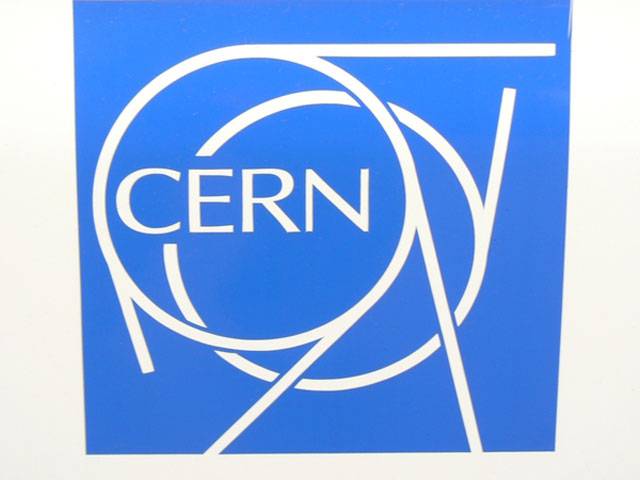ISLAMABAD - Pakistan is going to become an Associate Member of European Organization for Nuclear Research (CERN) before India. As part of the process, a 4-member high profile technical team will reach here today.
The team, led by Dr. Sergio Bertolucci, Director for Research and Scientific Computing, will stay in Pakistan from 10 to 14 February.
It is to be mentioned here that the application from Pakistan for the Associate Membership was submitted in February 2013. The visiting committee will assess and evaluate the scientific activities being undertaken in Pakistan. The team will also visit various universities, scientific organizations and industrial complexes in the country.
Pakistan has very cordial relationship with the European Organization for Nuclear Research (CERN) located in Geneva, Switzerland. CERN is a world leading scientific organization, which has been conducting research on High Energy Particle Physics since its inception in 1954.
The CERN members include 20 European countries. Recently, Israel has been accorded its membership. There are 3 associate members and 5 observer’s states including India. Pakistan fulfills all the criteria for becoming a CERN Associate Member.
There is a solid base of theoretical and experimental high-energy physics in the country. The industrial base and experience of high precision manufacturing enables Pakistan to make significant contributions to the CERN program. Pakistan has a long history of collaboration with CERN that began with the signing of a Cooperation Agreement in 1994. A Protocol for collaboration was signed in 1997, jointly between Pakistan Atomic Energy Commission (PAEC), National Centre for Physics (NCP), Islamabad and CERN.
Pakistan supplied 8 Magnet Supports to the CMS detector. These magnet Supports were manufactured at the Heavy Mechanical Complex-3 (HMC-3). The Magnet Supports were meant to hold up the main structure (main magnet) weighing 4 times the weight of Boeing 747.
These supports were delivered to CERN in the year 2000. A number of other projects were also undertaken by Pakistani scientists and engineers, prominent among these projects were the supply of 320 Resistive Plate Chambers (RPCs) for the Compact Muon Solenoid (CMS) detector.
In 2012, Chairman PAEC and DG CERN signed another important agreement for Pakistan’s contribution towards LHC Consolidation Programme. According to this agreement, a team of Pakistani engineers and technicians will work during the long shutdown in 2013 and 2014 and will cut 10,170 points and weld them back with high quality and precision. The consolidation team will be paid by CERN. The collaboration with CERN is not limited to scientific organizations such as PAEC and National Center of Physics (NCP). In 2012, COMSTATS Institute of Information Technology (CIIT) became a full member of ALICE collaboration and a computation grid was established at CIIT.
So far, around 120 scientists, engineers and students have visited CERN, whereas around 50 scientists and engineers have visited Pakistan from CERN. There are numerous benefits if Pakistan becomes Associate Member of CERN such as: Increased number of engineering contracts to support CERN programs which will be beneficial for our industrial sector, human resource development and technology transfer in key areas of radio-frequency (RF) technology, ion beam optics, cryogenics etc. The intellectual benefits are numerous and the scientific approach would increase manifolds.
Various applications of particle accelerators are; cancer treatment, sustainable and cleaner source of energy, disposal of nuclear waste, improved materials such as polymers, implantation of ions in semi-conductors, or date archaeological findings.
Dr. Abdus Salam got Physics Nobel Prize in 1979 on presenting a theory that resulted in combining weak and electro-magnetic forces. Recently, Francois Englert from Belgium and Peter Higgs from UK have been jointly awarded the Nobel Prize in Physics for 2013 for the discovery of `Higgs Boson’, the so-called `God particle’. The prize winning theory is central part of the Standard Model of particle physics that discusses how fundamental forces can be combined into a single unified force. Both the theories were proved using the accelerators at CERN.
Friday, April 19, 2024
Pakistan set to become CERN member
I High-profile delegation arrives in Islamabad today

Caption: Pakistan set to become CERN member
SC suspends ECP’s re-polling order in PP-51
April 19, 2024
Court approves plea bargain of Parvez Elahi’s co-accused
April 19, 2024
Zardari creates another parliamentary record
April 19, 2024
KP politicians, civil society laud President’s address
April 19, 2024
A Tense Neighbourhood
April 19, 2024
Dubai Underwater
April 19, 2024
X Debate Continues
April 19, 2024
Hepatitis Challenge
April 18, 2024
IMF Predictions
April 18, 2024
Kite tragedy
April 19, 2024
Discipline dilemma
April 19, 2024
Urgent plea
April 19, 2024
Justice denied
April 18, 2024
AI dilemmas unveiled
April 18, 2024
ePaper - Nawaiwaqt
Advertisement
Nawaiwaqt Group | Copyright © 2024





